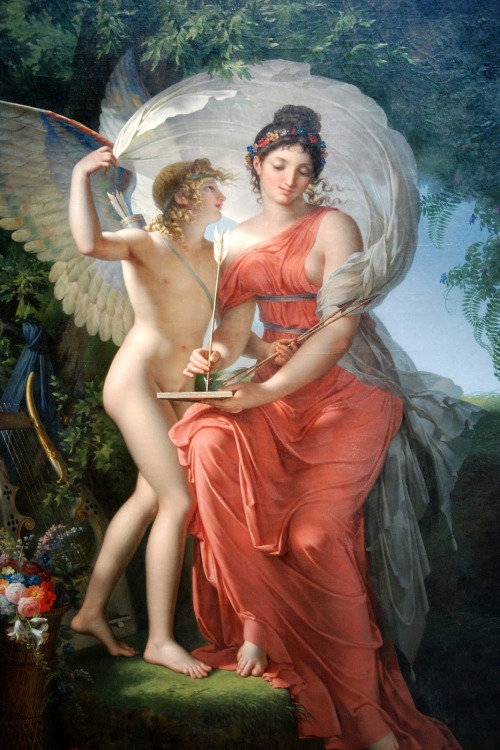#cithara


Calliope and Apollo
Roman Fresco, Pompeii

Apollo of Cyrene
- Roman copy of a Hellenistic original of about 200-150BC
- The British Museum
The god Apollo is rendered as a muscular young man. However, the feminine sensuality is displayed here by his over-emphasized hips. He is shown nude with the exception of a cloak wrapped around his hips which falls below the waist. As the god of music, he is shown playing a lyre, with a python nestled below. The fingers (now lost) of the left hand must have touched the strings of the ornamented lyre, the latter having been placed on a pillar.






Apollo, Marsyas, and Muses
- Paeston red figure lekanis lid
- 360 BCE - 340 BCE
- Attributed to Asteas




Apollo with his kithara
Details from an Attic red figure amphora, 500 BCE - 475 BCE

Apollo riding a sea horse in a marine environment
This Roman fresco discovered in the city of Pompeii was once the part of a thermopolium (snack bar) of Regio V.










Apollo and the Nine Muses
Pio-Clementino Exhibition hall, Vatican City

Dancing Apollo with a cithara
- Black figured drinking cup
- Attributed to Taras Painter (565 B.C.E)

Apollo citharoedus
A Roman copy of the original Greek work dating from 2nd century BCE
Pio-Clementino Exhibition hall, Vatican City
O muse, when together we beheld her countenance, you flew -
And inspiration fled with you
As I gazed upon her loveliness in silence.
Why must my voice become mute when I long
To render an exquisite song?
Were your enchanting words withheld from me
Because of her flawless beauty?
Then stifle only your harsh jealousy and release my tongue,
For love’s sweet verses must be sung,
And I will sing them forever if she consents.
Prayer to Erato
Post link

